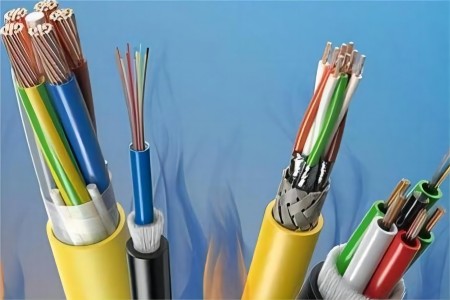The wire and cable industry is a “heavy material and light industry”, and the material cost accounts for about 65% to 85% of the product cost. Therefore, the selection of materials with reasonable performance and price ratio to ensure the quality of materials entering the factory is one of the important ways to reduce product costs and improve the competitiveness of enterprises.
Once there is a problem with the raw material of the cable, the cable will certainly have a problem, such as the copper content of the copper price, if it is too low, it must adjust the process, otherwise it will produce unqualified products and cause losses. So today, we can also look at those “black materials” of wire and cable raw materials:
1. Copper rod: made of recycled copper, surface oxidation discoloration, tension is not enough, not round, etc.
2. PVC plastic: impurities, thermal weight loss unqualified, extrusion layer has pores, difficult to plasticize, color is not correct.
3. XLPE insulation material: anti-burning time is short, easy early cross-linking and so on.
4. Silane cross-linking material: extrusion temperature is not well controlled, thermal extension is poor, surface roughness, etc.
5. Copper tape: uneven thickness, oxidation discoloration, insufficient tension, flaking, softening, hard, short head, poor connection, paint film or zinc layer off, etc.
6. Steel wire: outer diameter is too large, zinc layer off, insufficient galvanized, short head, insufficient tension, etc.
7. PP filling rope: poor material, uneven diameter, bad connection and so on.
8. PE filling strip: hard, easy to break, curvature is not equal.
9. Non-woven fabric tape: the actual thickness of the goods is not the version, the tension is not enough, and the width is uneven.
10. PVC tape: thick, insufficient tension, short head, uneven thickness, etc.
11. Refractory mica tape: stratification, tension is not enough, sticky, wrinkled belt disc, etc.
12. Alkali free rock wool rope: uneven thickness, insufficient tension, more joints, easy to fall powder and so on.
13. Glass fiber yarn: thick, drawing, weaving density is small, mixed organic fibers, easy to tear and so on.
14. Low Smoke Halogen Free Flame Retardant Tape: easy to break, tape wrinkle, drawing, poor flame retardant, smoke and so on.
15. Heat shrinkable cap: specification and size is not allowed, poor material memory, long burn shrinkage, poor strength, etc.
Therefore, wire and cable manufacturers need to be extra careful when choosing cable raw materials. First, a comprehensive sample performance test must be carried out to ensure that the raw material can meet the technical requirements and quality standards of the product. Second, pay close attention to each product parameter to ensure that it meets the design specifications and practical application requirements. In addition, it is also necessary to conduct a comprehensive investigation of wire and cable raw material suppliers, including reviewing their qualifications and credibility, assessing their production capacity and technical level to ensure that the quality of the purchased raw materials is reliable and the performance is stable. Only through strict control can we ensure the quality and safety of wire and cable products.
Post time: May-28-2024


